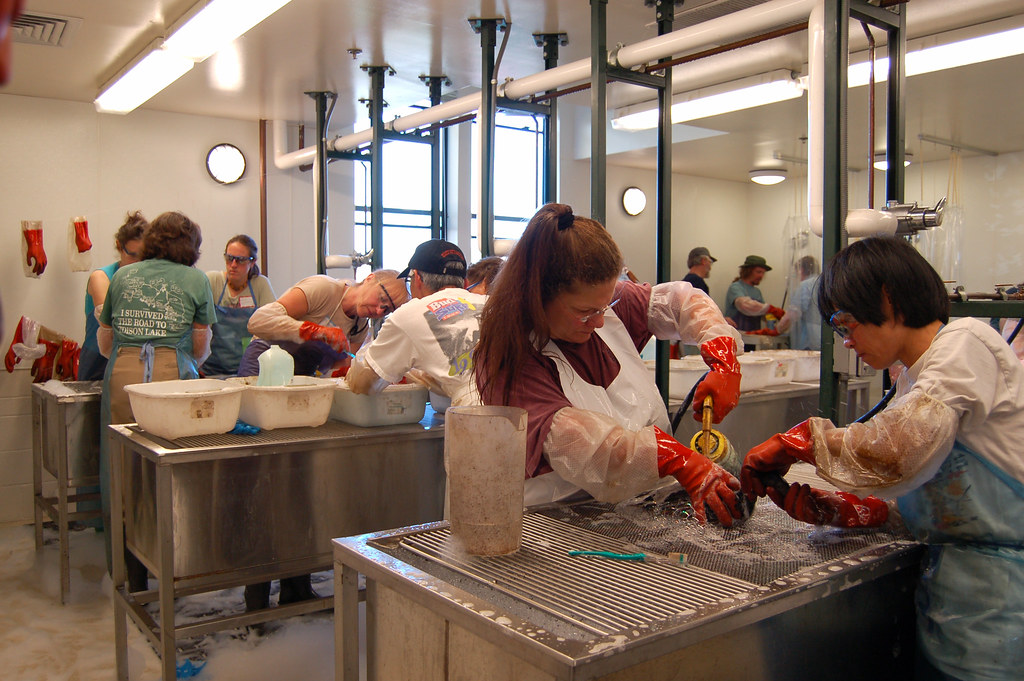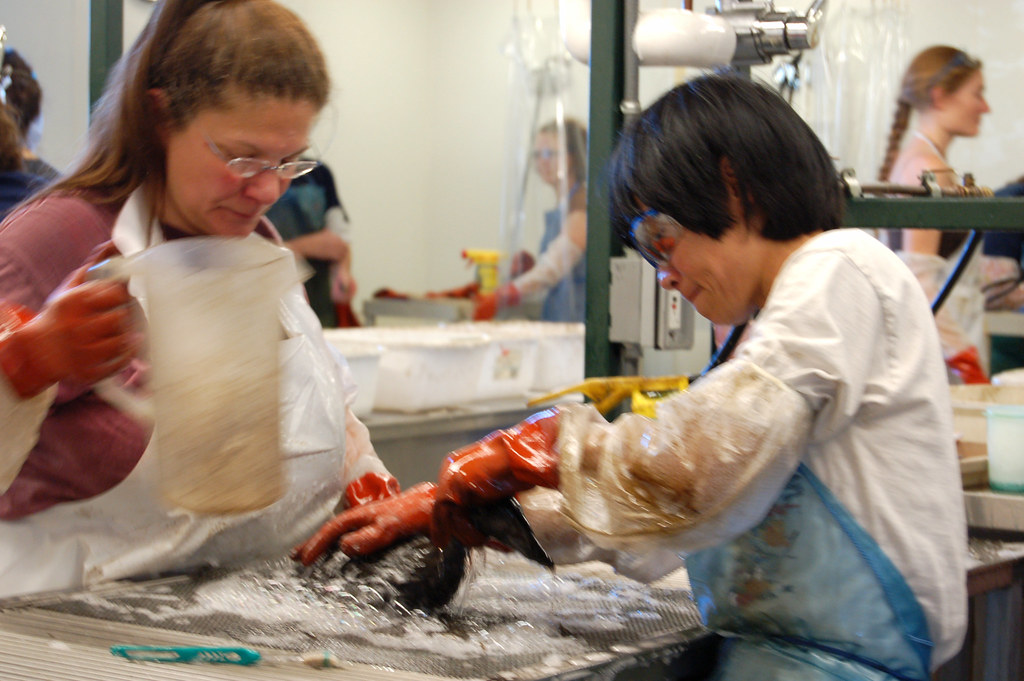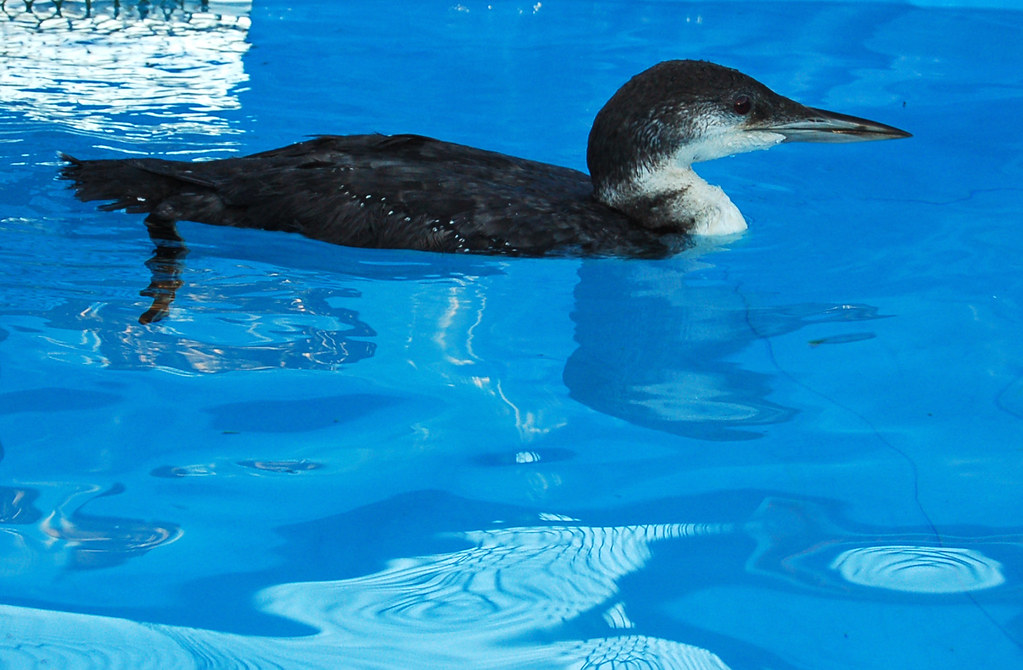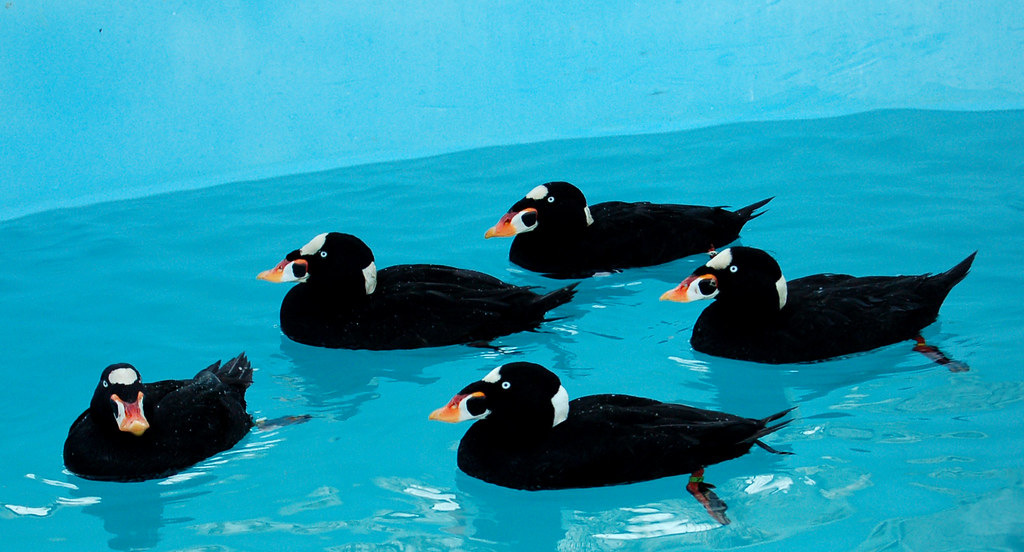Like Water Off a Duck's Back...

The International Bird Rescue Research Center in Cordelia California is an animal hospital whose primary focus is the care of oiled and injured waterfowl. This place is vast and truly impressive.
The entire facility is set up for an emergency just like the one we're dealing with. There is a huge room for the intake and stabilization of birds, where all the workers wear HazMat suits. I am not trained in these procedures, and was happy to leave these tasks to the professionals. It is hot, disgusting, exhausting work.

Once the birds are stabilized, they are washed. It typically takes forty five minutes and three hundred gallons of water to wash a bird. The birds are first treated with a solvent, and then they are washed with Dawn dish soap, which cuts through oil like nothing else. This is a terribly stressful experience for the birds.
After washing, the leg bands that were put on when the birds were admitted are removed. Even after washing, these bands are contaminated with oil.
Sheri spent the better part of her day re-banding freshly-washed birds and dealing with their hospitalization paperwork. Just like a human patient, each bird has a medical history record.
Sheri looked at a lot of towel wrapped birds' feet.

I got to be a bird handler, which was thrilling and a bit terrifying. Wild birds want nothing to do with humans (and we don't want them to become accustomed to human contact). They squirm and try to escape, and will bite, if you don't keep their heads covered. The two larger birds shown on the "haul-out" net are Western Grebes. We have to wear safety glasses when we handle these birds, because they are not afraid to attack a handler's face.
Once the birds are washed, they have to be dried off, quickly. Wet birds can become hypothermic and die. The birds are placed in storage pens, which is what we spent yesterday building. The bottoms of the pens are made of netting, so that the birds do not sit on a hard waste-covered surface. The pens are covered in old bedsheets, to keep the birds from being exposed to too much visual stress. The pens all have heaters running to warm and dry the birds.

It sounds counter-intuitive, but the birds can only be put into water when they have dried completely. Waterfowl have special feathers that insulate their bodies, keeping them warm and dry. If a bird gets wet, it cannot thermo-regulate and will die of hypothermia.
After the birds have dried, they are wrapped in towels ("birdie burritos") and weighed. Then they are placed in fully-enclosed warm water therapy pools. There are volunteers assigned to feed and monitor these birds, to be sure that they seem healthy.
The little fellow pictured above is a Murre. He is busily washing himself in the therapy pool. If you click on this photo, you can see a larger version of this image, and see the water just running off his feathers. Plus you get a better look at his odd, spiky tail!

After a period in the warm pools, the birds come back inside, to dry out again. If they are doing well, they are then moved to open-air (netted over) cool water pools. Most aquatic bird's legs are not suited to sitting on dry land. If the birds have to sit on the ground (even on hammock-y net-bottomed pens) they will scrape up their breasts and risk develop potentially fatal "keel lesions." It is imperative that the birds get in water as quickly as possible.

Since the San Francisco Bay is still full of oil, someone still has to figure out where all of these birds are going to be released.
To complicate matters, there is currently a second "mystery spill" going on in Santa Cruz. (Nobody knows the source of the oil that is coating these animals.) At first, the birds affected by this spill were brought up to the facility where I've been volunteering. But it was important to keep the two sets of birds segregated, and there just wasn't room for the Santa Cruz birds. Luckily, the IBRRC also runs a facility in Southern California. Yesterday, a volunteer drove all the way from Los Angeles to bring the Santa Cruz birds to IBRRC's Southern California hospital.
Finally, it is worth mentioning the huge Russian oil spill that happened this week. Normally, the staff of the IBRRC would have flown to Russia to help people set up an oiled bird field hospital. As wonderful as the staff at IBRRC are, they cannot be on two continents at one time.

Comments
Grumpy Grinch
Annalisa
Thank you, thank you, thank you!
CLoveR
You are an amazing person. Thank you for the pictures of those poor helpless little creatures. I think I may share these with my students so they can see the devastation and the solution, up close and personal. Maybe they'll feel motivated to learn more, and possibly come up with a way to help.
Well it would look great on a T!
Thank you and all the other voluteers for doing this
thanks,
Bee